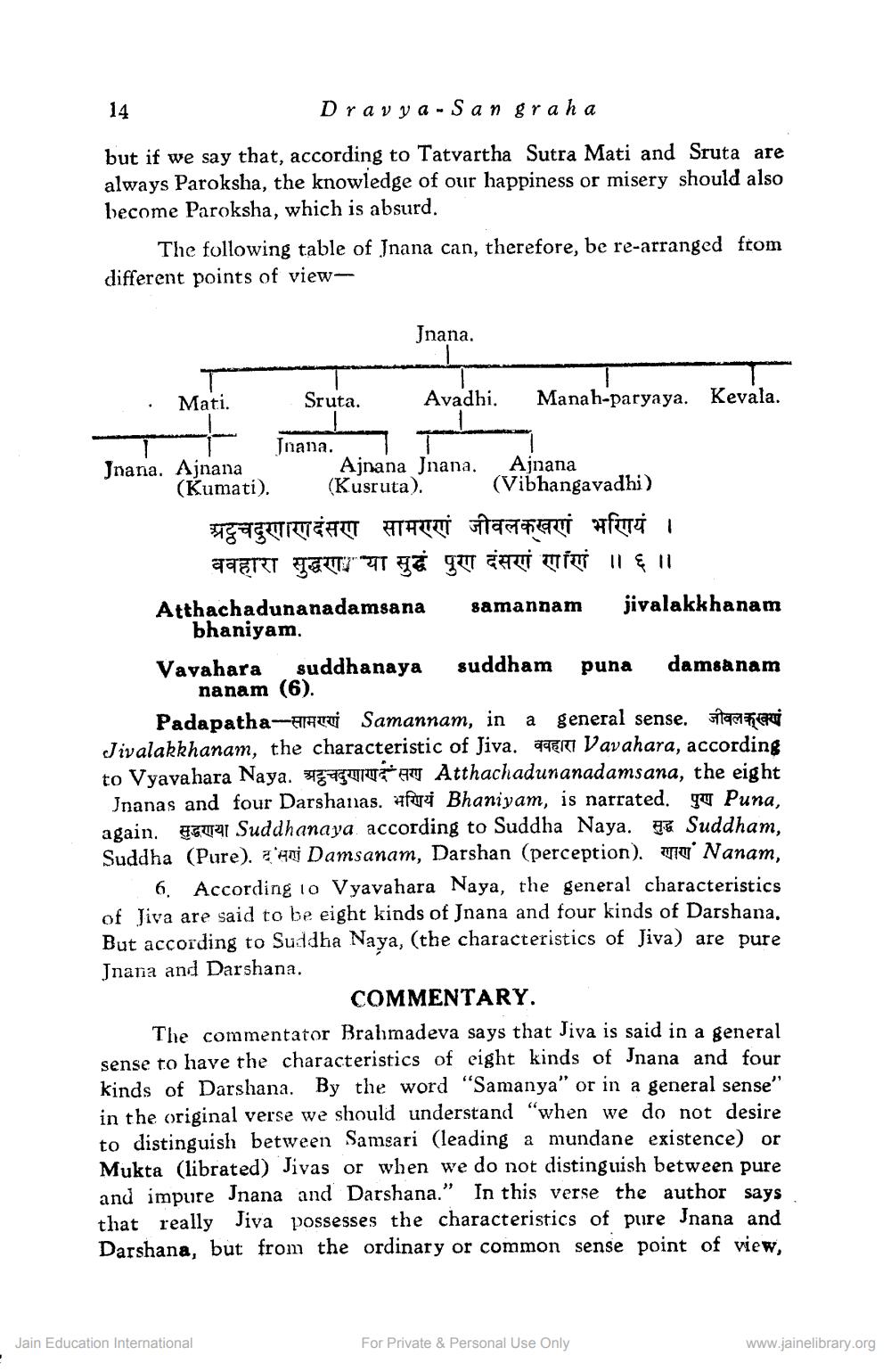________________
14
Dravya Sangraha
but if we say that, according to Tatvartha Sutra Mati and Sruta are always Paroksha, the knowledge of our happiness or misery should also become Paroksha, which is absurd.
The following table of Jnana can, therefore, be re-arranged from different points of view
Mati.
Jnana. Ajnana (Kumati).
Sruta.
Jnana.
Jnana.
Avadhi.
Jain Education International
Manah-paryaya. Kevala.
Ajnana Jnana. Ajnana (Kusruta).
Atthachadunanadamsana
bhaniyam.
(Vibhangavadhi)
अचदुरारणदंसण सामरणं जीवलक्खणं भणियं । ववहारा सुद्धा या सुद्धं पुरण दंसरणं गाणं ॥ ६ ॥
samannam
Vavahara suddhanaya suddham puna nanam (6).
Padapatha
jivalakkhanam
Samannam, in a general sense जीवलक्वणं Jivalakkhanam, the characteristic of Jiva. Vavahara, according to Vyavahara Naya. Atthachadunanadamsana, the eight
Jnanas and four Darshanas. af Bhaniyam, is narrated. g Puna, again. Suddhanaya according to Suddha Naya. Suddham, Suddha (Pure). 'n Damsanam, Darshan (perception).
Nanam,
damsanam
6. According to Vyavahara Naya, the general characteristics of Jiva are said to be eight kinds of Jnana and four kinds of Darshana. But according to Suddha Naya, (the characteristics of Jiva) are pure Jnana and Darshana.
COMMENTARY.
The commentator Brahmadeva says that Jiva is said in a general sense to have the characteristics of eight kinds of Jnana and four kinds of Darshana. By the word "Samanya" or in a general sense" in the original verse we should understand "when we do not desire to distinguish between Samsari (leading a mundane existence) or Mukta (librated) Jivas or when we do not distinguish between pure and impure Jnana and Darshana." In this verse the author says that really Jiva possesses the characteristics of pure Jnana and Darshana, but from the ordinary or common sense point of view,
For Private & Personal Use Only
www.jainelibrary.org




